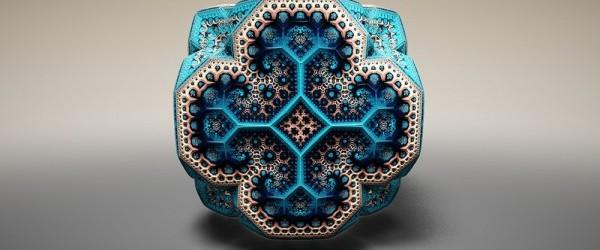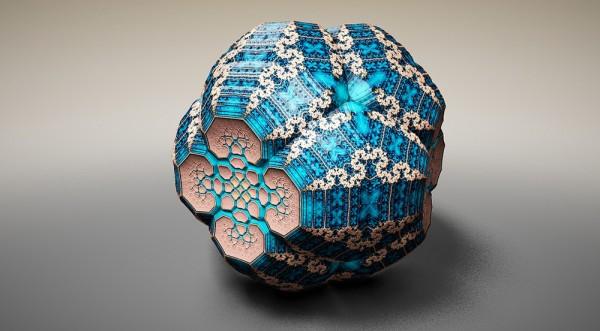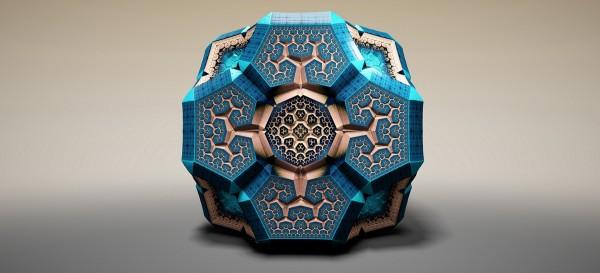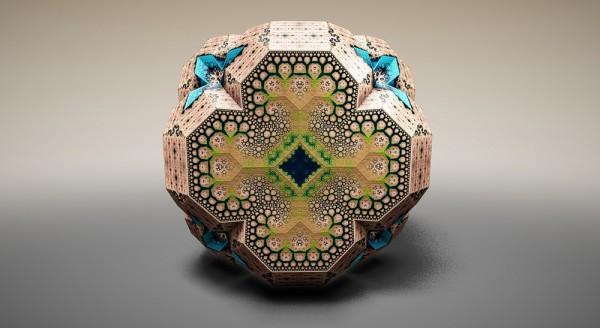






Images by subBlue/Tom Beddard
Scotland-based laser physicist-turned-artist and web developer Tom Beddard, aka subBlue, has produced a number of intriguing geometric forms he refers to as Fabergé Fractals. Like an ornate Fabergé egg, Beddard’s creations boast brilliant and intricate design patterns. The English artist uses a formulaic method to create his digitally rendered three-dimensional models.
Beddard explains: “The 3D fractals are generated by iterative formulas whereby the output of one iteration forms the input for the next. The formulas effectively fold, scale, rotate or flip space. They are truly fractal in the fact that more and more detail can be revealed the closer to the surface you travel.
“The fascinating aspect is where combinations of parameters can combine to create structural ‘resonances’ of extraordinary detail and beauty—sometimes naturally organic and other times perfectly geometric. But then like a chaotic system it can completely disappear with the smallest perturbation.”
Parametric modeling is becoming increasingly more popular with designers and architects. Due to the difficulties in building parametric models designers usually keep their models in the digital world. The vast majority of works are in the digital world, including Tom Beddard’s experiments with fractals. In this set, called Fabergé Fractals, Beddard creates 3D models and derives renderings from them. The artist has this to say:
The 3D fractals are generated by iterative formulas whereby the output of one iteration forms the input for the next. The formulas effectively fold, scale, rotate or flip space. They are truly fractal in the fact that more and more detail can be revealed the closer to the surface you travel.
The fascinating aspect is where combinations of parameters can combine to create structural “resonances” of extraordinary detail and beauty—sometimes naturally organic and other times perfectly geometric. But then like a chaotic system it can completely disappear with the smallest perturbation.
via Architizer
